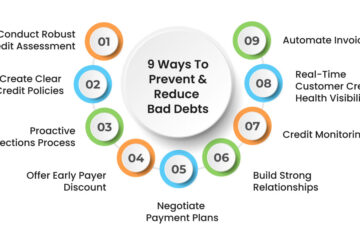Key Takeaways
- Understanding the importance of comprehensive data security for businesses.
- Exploring various modern data security approaches and strategies.
- Implementing best practices to safeguard sensitive information effectively.
Table of Contents
- Data Security Fundamentals
- Common Threats to Data Security
- Critical Strategies for Modern Data Security
- Implementing Security Measures
- Future Trends in Data Security
- Best Practices and Recommendations
Data Security Fundamentals
Data security is the process of preventing digital information from being stolen, tampered with, or accessed without authorization at any point in its existence. In the current digital era, data security is crucial for companies of all kinds. Effective data security solutions can protect against a variety of dangers that businesses encounter on a regular basis.
The significance of safeguarding confidential information cannot be overstated. Robust data security goes beyond simply preventing data breaches; it also complies with regulatory requirements like the CCPA and GDPR, helps evade expensive fines, and upholds consumer confidence. There has never been a more pressing need for strict data protection measures, given the growing reliance on digital infrastructure. Data breaches may cost businesses $3.86 million on average, according to recent figures, underscoring the vital necessity of thorough security plans.
Common Threats to Data Security
Data security is a critical concern, and understanding common threats is essential for safeguarding information. These include malware and ransomware, phishing attacks, insider threats, data leakage, and advanced persistent threats (APTs). Malware can encrypt or steal data, demanding ransom for its return, often through phishing emails or compromised websites. Phishing attacks disguise sensitive information as trustworthy, targeting unsuspecting employees to reveal passwords or financial information. Insider threats involve employees or contractors misusing access to data, requiring strict access controls and monitoring activities. Data leakage occurs unintentionally, requiring encryption and secure data transfer protocols. Advanced persistent threats involve:
- Long-term targeted attacks.
- Requiring sophisticated methods and continuous monitoring.
- Necessitating advanced threat detection systems.
Critical Strategies for Modern Data Security
To safeguard sensitive data, businesses should employ a combination of techniques, including End-to-End Encryption, Multi-Factor Authentication (MFA), Regular Security Audits, Employee Training and Awareness, and Zero Trust Architecture. Encryption ensures data is unreadable to unauthorized personnel, providing a robust defense against data breaches. MFA uses multiple verification methods, such as passwords, mobile codes, or biometrics, to ensure only authorized access. Regular security audits help identify potential weaknesses and rectify them before they are exploited. Employee training helps employees recognize phishing attempts, follow proper data handling procedures, and stay updated with the latest security practices. Zero Trust Architecture requires strict identity verification for every user and device accessing network resources, limiting access based on the principle of least privilege.
Implementing Security Measures
When implementing security measures, businesses should take a layered approach. Combining physical, technical, and administrative controls provides a comprehensive defense against threats. For example, conducting regular security audits not only identifies vulnerabilities but also reinforces the importance of security within the organization.
For example, regular security audits can highlight unpatched software vulnerabilities, and employee training sessions can update staff on the latest phishing scams. By continually adjusting and improving security measures, businesses can adapt to evolving threats and ensure robust protection. For an in-depth look at emerging technologies in data security, you can read this article from Forbes.
Future Trends in Data Security
Future trends in data security include the rise of AI and machine learning in threat detection, which can predict and identify potential security threats before they harm. Privacy-enhancing technologies are being developed to protect user privacy and comply with regulations. Blockchain is being adopted for secure transactions due to its decentralized nature, offering tamper-proof records and transparent audit trails. Cloud security solutions are also evolving, with advanced threat detection, end-to-end encryption, and robust access controls to ensure data security in the cloud environment. These trends are expected to shape the future of data security.
Best Practices and Recommendations
Businesses should constantly update and patch software, do periodic penetration tests, put in place a reliable backup and recovery strategy, teach and train staff members on cybersecurity best practices, and invest in the newest security tools and technologies to maintain robust data protection. Frequent training and upgrades help lower the risks associated with human error and guarantee that companies remain ahead of new threats. Businesses can keep ahead of evolving threats with the aid of advanced security solutions like biometric authentication, AI-driven threat detection, and endpoint protection. By adhering to these recommendations, companies may enhance data security, reduce the chance of security breaches, and foster Trust with stakeholders and consumers—all of which will eventually improve the company’s overall performance and reputation.
Stay in touch to get more updates & news onTimes Analysis!



